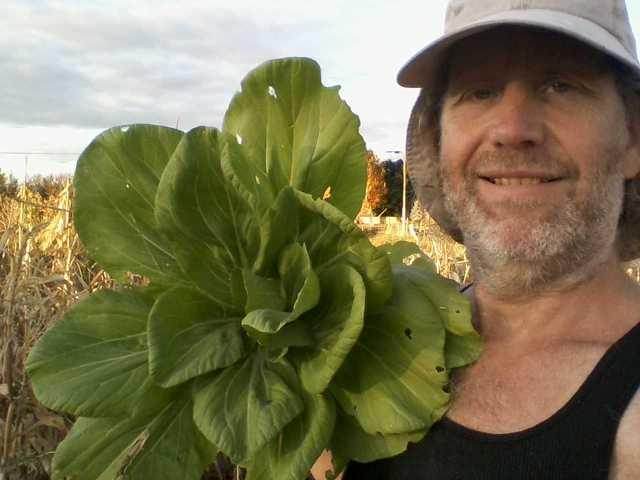
 4
4




 2
2








 1
1








 1
1




 1
1




 5
5




"In a fruit forest everyone is happy"- Sepp Holzer








 2
2




The ultimate goal of farming is not the growing of crops, but the cultivation and perfection of human beings. - Masanobu Fukuoka













I'm just a girl trying to fix some seriously damaged land. Seriously.








Moderator, Treatment Free Beekeepers group on Facebook.
https://www.facebook.com/groups/treatmentfreebeekeepers/









 3
3




Gilbert Fritz wrote:
Has anyone ever tried to eat some of the more extravagant looking ornamental kales? Just imagine one on a six foot stock!


How permies.com works
What is a Mother Tree ?








 1
1




Guy De Pompignac wrote:Burra: Oh My God ! Do you know how hardy are these kales ?
How permies.com works
What is a Mother Tree ?
 4
4




 2
2




M.K. Dorje Jr. wrote:
I also grow Purple-Sprouting Broccoli as a perennial. I just pinch off the flowers and bend the stems over so the plants can re-root along the stem. These guys can go for years like this without much care. Some of new ones survived the recent deep freeze without problems- these guys are tough! Plant them in a spot where they'll get afternoon shade in the summer and they'll do fine.

 1
1




 1
1




 1
1




Guy De Pompignac wrote:
M.K. Dorje Jr. wrote:
I also grow Purple-Sprouting Broccoli as a perennial. I just pinch off the flowers and bend the stems over so the plants can re-root along the stem. These guys can go for years like this without much care. Some of new ones survived the recent deep freeze without problems- these guys are tough! Plant them in a spot where they'll get afternoon shade in the summer and they'll do fine.
Hi MK, is the purple sprouting broccoli Purple Peacock ?
"In a fruit forest everyone is happy"- Sepp Holzer
 1
1




"In a fruit forest everyone is happy"- Sepp Holzer
 1
1




 1
1




 1
1




 1
1




 1
1




"In a fruit forest everyone is happy"- Sepp Holzer
 1
1




 2
2




 1
1




 1
1




 3
3





 6
6





 3
3




 2
2




Perfect for the homesteader, gardeners of small spaces, and farmers alike! This is a grex (interbreeding mix) of Purple Tree Collards and Daubenton crossed to a variety of other kales, cabbage, Brussels sprouts, Redbor kale, and other perennial kales collected around the Pacific Northwest. The blending of these varieties has resulted in a huge diversity of leaf shapes from long and thin to ruffled or flat, colors ranging from yellow green, red, dark purple, variegated white, and solid green. A variety of plant architectures from extremely tall tree cabbage or palm kale types to bushy plants with many branching stems. However, nearly all plants are perennial and with great flavor passing down nicely from the exceptional epicurean parent varieties of this mix. In taste tests, this kale collards mix has been consistently enjoyed and savored by several chefs, farmers market customers, and CSA share customers alike. The greatest part about all this is that you can easily keep in production and renew the best perennials indefinitely by taking cuttings of second year stems and burying them in rows in fall or late winter. I'll write more about this later.
The initial cross was part chance luck and forethought of my friend Graham from Wales. He was generous enough to send me some initial precious seed. Since then this genepool has undergone a selection for perenniality, bushing habit, winter hardiness, aphid resistance, and against various undesirable plant characteristics. Seed like this is simply unavailable anywhere else. I am releasing this unstable seed as a breeders mix for those wishing to select their own unique perennial kales. Furthermore, in the collaborative spirit of the small community working with perennial kales, this seed is being released under the OSSI license to protect this important genetic material from large multi-national seed conglomerates that might s
Permaculture market farming, plant breeding and perennial grains: http://jasonpadvorac.com

|
Every plan is a little cooler if you have a blimp. And a tiny ad.
The new gardening playing cards kickstarter is now live!
https://www.kickstarter.com/projects/paulwheaton/garden-cards
|









